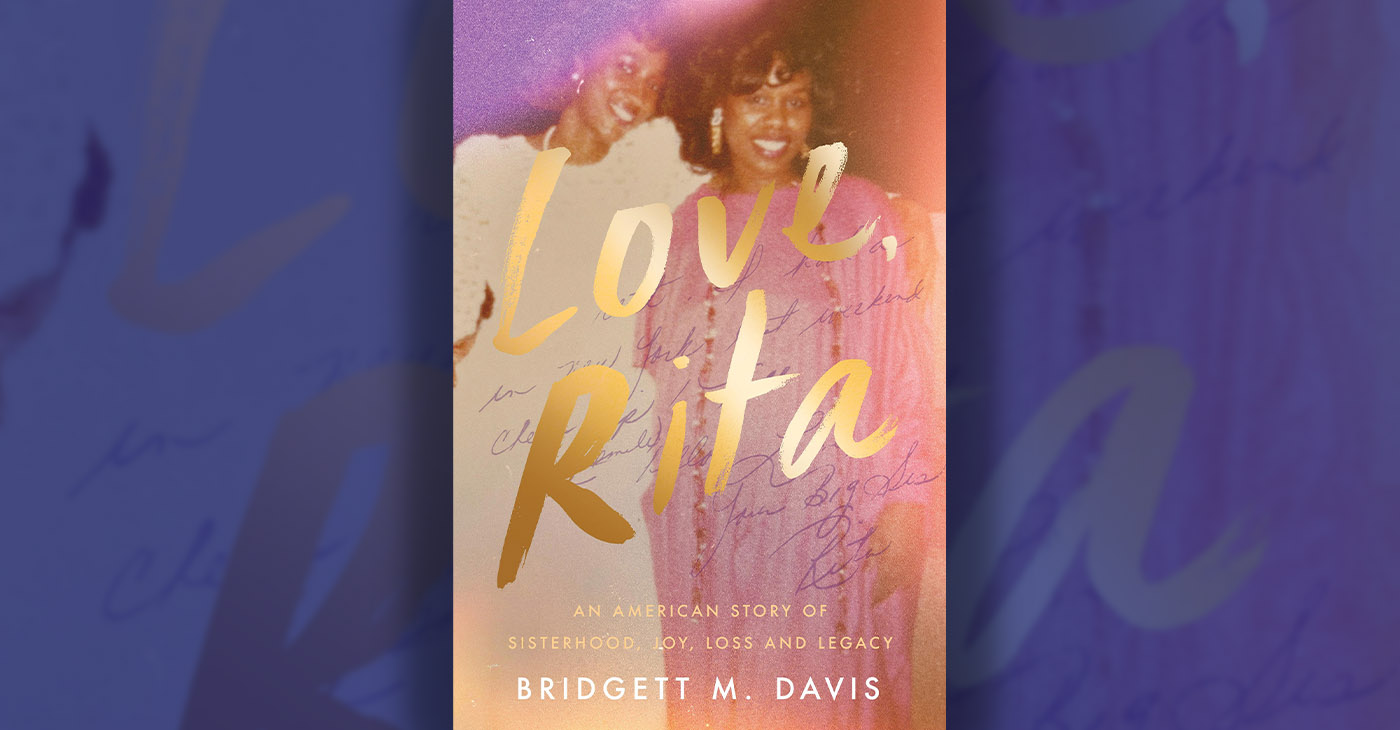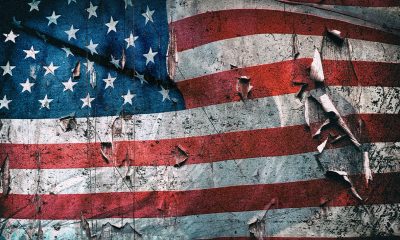Book Reviews
Books: “The Risk It Takes to Bloom: On Life and Liberation” by Raquel Willis
The catalogs should start arriving soon. If you’re a gardener, that’s a siren song for you. What will you put in your pots and plots this spring? What colors will you have, what crops will you harvest? It never gets old: put a seed no bigger than a breadcrumb into some dirt and it becomes dinner in just weeks. All it needs, as in the new memoir “The Risk It Takes to Bloom” by Raquel Willis, is a little time to grow.

By Terri Schlichenmeyer
The catalogs should start arriving soon.
If you’re a gardener, that’s a siren song for you. What will you put in your pots and plots this spring? What colors will you have, what crops will you harvest? It never gets old: put a seed no bigger than a breadcrumb into some dirt and it becomes dinner in just weeks. All it needs, as in the new memoir “The Risk It Takes to Bloom” by Raquel Willis, is a little time to grow.
The last time Raquel Willis remembers being completely safe and loved without strings attached was at age five, at a talent show. Shortly afterwards, some elders began telling Willis to speak with “a particular brand of clear,” to move differently, to act differently. Willis was a Black boy then, and that was how her father worked against his son’s “softness.”
Willis didn’t know the truth about herself then, but other boys did. So, eventually, did the girls, as a grade school Willis “gravitated… toward” them. Young Willis prayed for God to “just make me a girl” but the bullying that had already begun only got worse.
She changed schools and things were no better. Meanwhile, her father tried “even harder to correct who I was becoming.” Friends and online friends were encouraging and supportive, offering her courage to come out to her mother, who thought it was “a phase.” Her father was angry, then accepting. Other family members took Willis’ news in stride.
It was going to be okay. More than okay, in fact, because Willis was introduced to drag, and she started to feel more comfortable in women’s clothing than in men’s attire. To Willis, the drag troupe had begun feeling like family. She settled into life as a gay drag performer because that was the “language” that came naturally to her.
And then, one day, while talking on the phone with an on-again-off-again boyfriend, something important hit Willis, hard.
“I think I’m a woman,” she told him. “I’m a woman…. I am.”
Sometimes, it takes a while to understand the person you really are. Half a book, in this case, because “The Risk It Takes to Bloom” is quite wordy: author Raquel Willis tells her story in excruciating detail, and it can get rather long.
And, yet, the length allows for clues that readers can follow, to truly see the woman, the activist and writer, who penned this book. But is that enough to attract readers? What sets this book apart from other, similar books by star-powered Black trans women?
The answer lies in the approachability of its author.
The strength of Willis’ story lies in its familiarity and its simplicity — it is more down-to-earth — like she could have lived up the street from you or sat in the last row of your high school Algebra class. You could’ve known her. You could know someone like her. Or Willis could be you.
Indeed, this book might hold plainspoken inspiration for anyone who needs it. If that’s you, get “The Risk It Takes to Bloom,” find a chair, and plant yourself.
“The Risk It Takes to Bloom: On Life and Liberation” — c.2023, St. Martin’s Press, $29.00, 384 pages
Arts and Culture
Book Review: American Kings – A Biography of the Quarterback
Wickersham calls his book “a biography,” but it’s just as much a history, since he refers often to the earliest days of the game, as well as the etymology of the word “quarterback.” That helps to lay a solid background, and it adds color to a reader’s knowledge about football itself, while explaining what it takes for men and women to stand out and to achieve gridiron greatness.

By Terri Schlichenmeyer
Author: Seth Wickersham, Copyright: c.2025, Publisher: Hyperion Avenue, Price: $29.99, Page Count: 407 pages
Snap.
And with that, and a catch that’s picture-perfect, your team is on its way to another win. The guy that threw the football sure knows his stuff. He’s worth every penny he’s paid, and in the new book “American Kings” by Seth Wickersham, you’ll see what it took to get there.
Like so many little boys, Wickersham wanted to play pro football when he was growing up; specifically, he wanted to be a quarterback. Unlike most other boys, though, he took it to an extreme, becoming “obsessed” with throwing a football with the best accuracy, hoping to match the skills of the players he admired.
Alas, despite an entire childhood of near-constant practice and a few wins on the field in high school, he didn’t make varsity and ended up playing as a receiver.
He knows now that to be a quarterback is to be a star, but it’s also “a way of life.”
Here, he writes about Arch Manning, “a legend, a folk hero, a song title… and the beginning of a family franchise…” Wickersham shares the story of Warren Moon, how he stepped up to help his mother when his father died, how domestic violence almost derailed his legacy, and the racism he quarterbacked under for years.
He spent time with Caleb Williams, “the first true professional amateur quarterback” to get money for playing at the college level. He interviewed James Harris, who was prepared to become a teacher “If the league didn’t want a Black quarterback…” Wickersham “spent much of 2022 with” Andrew Luck, who “learned quickly that greatness requires an… unlimited selfishness.” He writes about how Jack Elway influenced his son’s choice of career, what Hollywood had to do with one pro footballer’s life, and the post-career of the first player “to throw a consistently beautiful spiral.”
Says Wickersham about his subjects, “Anyone could throw a football. Only a quarterback could make people cheer.”
Your favorite chair is oiled for smooth reclining and fast slam-downs. The snacks are laid in for at least a week, and beverages are on ice. You know exactly what you’re wearing for the game this weekend. All you need is “American Kings” and you’re set.
Wickersham calls his book “a biography,” but it’s just as much a history, since he refers often to the earliest days of the game, as well as the etymology of the word “quarterback.” That helps to lay a solid background, and it adds color to a reader’s knowledge about football itself, while explaining what it takes for men and women to stand out and to achieve gridiron greatness. On that. Wickersham is honest, sometimes calling out his subjects for their attitudes toward teammates and others. Blunt words are used that are unprintable in family newspapers, so beware if you’re sharing.
Is your team’s QB in this book? Maybe. But, more than likely, a past favorite is, So, check out “American Kings” and see what you find. Football fans and pigskin prognosticators both will love this book in a snap.
Activism
BOOK REVIEW: The Afterlife of Malcolm X
Betty Shabazz didn’t like to go to her husband’s speeches, but on that February night in 1965, he asked her to come with their daughters to the Audubon Ballroom in New York. Did Malcolm X sense that something bad would happen on that night? Surely. He was fully aware of the possibility, knowing that he’d been “a marked man” for months because of his very public break with the Nation of Islam.

By Terri Schlichenmeyer
Author: by Mark Whitaker, c.2025, Simon & Schuster, $30.99, 448 pages
Who will remember you in fifty years’ time?
A handful of friends – at least those who are still around – might recall you. Your offspring, grandkids, and greats, maybe people who stumble upon your tombstone. Think about it: who will remember you in 2075? And then read “The Afterlife of Malcolm X” by Mark Whitaker and learn about a legacy that still resonates a half-century later.
Betty Shabazz didn’t like to go to her husband’s speeches, but on that February night in 1965, he asked her to come with their daughters to the Audubon Ballroom in New York. Did Malcolm X sense that something bad would happen on that night? Surely. He was fully aware of the possibility, knowing that he’d been “a marked man” for months because of his very public break with the Nation of Islam.
As the news of his murder spread around New York and around the world, his followers and admirers reacted in many ways. His friend, journalist Peter Goldman, was “hardly shocked” because he also knew that Malcolm’s life was in danger, but the arrest of three men accused of the crime didn’t add up. It ultimately became Goldman’s “obsession.”
Malcolm’s co-writer for The Autobiography of Malcolm X, Alex Haley, quietly finished the book he started with Malcolm, and a small upstart publishing house snatched it up. A diverse group of magazines got in line to run articles about Malcolm X’s life, finally sensing that White America “’needed his voice even more than Blacks did.’”
But though Malcolm X was gone, he continued to leave an impact.
He didn’t live long enough to see the official founding of the Black Panther Party, but he was influential on its beginning. He never knew of the first Kwanzaa, or the triumphs of a convert named Muhammad Ali.
Malcolm left his mark on music. He influenced at least three major athletes.
He was a “touchstone” for a president …
While it’s true that “The Afterlife of Malcolm X” is an eye-opening book, one that works as a great companion to the autobiography, it’s also a fact that it’s somewhat scattered. Is it a look at Malcolm’s life, his legacy, or is it a “murder mystery”?
Turns out, it’s all three, but the storylines are not smooth. There are twists and tangents and that may take some getting used-to. Just when you’re immersed, even absorbed in this book, to the point where you forget about your surroundings, author Mark Whitaker abruptly moves to a different part of the story. It may be jarring.
And yet, it’s a big part of this book, and it’s essential for readers to know the investigation’s outcome and what we know today. It doesn’t change Malcolm X’s legacy, but it adds another frame around it.
If you’ve read the autobiography, if you haven’t thought about Malcolm X in a while, or if you think you know all there is to know, then you owe it to yourself to find “The Afterlife of Malcolm X.”
For you, this is a book you won’t easily forget.
Arts and Culture
BOOK REVIEW: Love, Rita: An American Story of Sisterhood, Joy, Loss, and Legacy
When Bridgett M. Davis was in college, her sister Rita was diagnosed with lupus, a disease of the immune system that often left her constantly tired and sore. Davis was a bit unfazed, but sympathetic to Rita’s suffering and also annoyed that the disease sometimes came between them. By that time, they needed one another more than ever.

By Terri Schlichenmeyer
Author: Bridgett M. Davis, c.2025, Harper, $29.99, 367 Pages
Take care.
Do it because you want to stay well, upright, and away from illness. Eat right, swallow your vitamins and hydrate, keep good habits and hygiene, and cross your fingers. Take care as much as you can because, as in the new book, “Love, Rita” by Bridgett M. Davis, your well-being is sometimes out of your hands.
It was a family story told often: when Davis was born, her sister, Rita, then four years old, stormed up to her crying newborn sibling and said, ‘Shut your … mouth!’
Rita, says Davis, didn’t want a little sister then. She already had two big sisters and a neighbor who was somewhat of a “sister,” and this baby was an irritation. As Davis grew, the feeling was mutual, although she always knew that Rita loved her.
Over the years, the sisters tried many times not to fight — on their own and at the urging of their mother — and though division was ever present, it eased when Rita went to college. Davis was still in high school then, and she admired her big sister.
She eagerly devoured frequent letters sent to her in the mail, signed, “Love, Rita.”
When Davis was in college herself, Rita was diagnosed with lupus, a disease of the immune system that often left her constantly tired and sore. Davis was a bit unfazed, but sympathetic to Rita’s suffering and also annoyed that the disease sometimes came between them. By that time, they needed one another more than ever.
First, they lost their father. Drugs then invaded the family and addiction stole two siblings. A sister and a young nephew were murdered in a domestic violence incident. Their mother was devastated; Rita’s lupus was an “added weight of her sorrow.”
After their mother died of colon cancer, Rita’s lupus took a turn for the worse.
“Did she even stand a chance?” Davis wrote in her journal.
“It just didn’t seem possible that she, someone so full of life, could die.”
Let’s start here: once you get past the prologue in “Love, Rita,” you may lose interest. Maybe.
Most of the stories that author Bridgett M. Davis shares are mildly interesting, nothing rare, mostly commonplace tales of growing up in the 1960s and ’70s with a sibling. There are a lot of these kinds of stories, and they tend to generally melt together. After about fifty pages of them, you might start to think about putting the book aside.
But don’t. Not quite yet.
In between those everyday tales, Davis occasionally writes about being an ailing Black woman in America, the incorrect assumptions made by doctors, the history of medical treatment for Black people (women in particular), attitudes, and mythologies. Those passages are now and then, interspersed, but worth scanning for.
This book is perhaps best for anyone with the patience for a slow-paced memoir, or anyone who loves a Black woman who’s ill or might be ill someday. If that’s you and you can read between the lines, then “Love, Rita” is a book to take in carefully.
-

 Activism3 weeks ago
Activism3 weeks agoOakland Post: Week of November 12 – 18, 2025
-

 Activism2 weeks ago
Activism2 weeks agoIN MEMORIAM: William ‘Bill’ Patterson, 94
-

 Activism3 weeks ago
Activism3 weeks agoHow Charles R. Drew University Navigated More Than $20 Million in Fed Cuts – Still Prioritizing Students and Community Health
-

 Bay Area3 weeks ago
Bay Area3 weeks agoNo Justice in the Justice System
-

 #NNPA BlackPress3 weeks ago
#NNPA BlackPress3 weeks agoThe Perfumed Hand of Hypocrisy: Trump Hosted Former Terror Suspect While America Condemns a Muslim Mayor
-

 #NNPA BlackPress2 weeks ago
#NNPA BlackPress2 weeks agoTrump’s Death Threat Rhetoric Sends Nation into Crisis
-

 #NNPA BlackPress4 weeks ago
#NNPA BlackPress4 weeks agoProtecting Pedophiles: The GOP’s Warped Crusade Against Its Own Lies
-

 #NNPA BlackPress3 weeks ago
#NNPA BlackPress3 weeks agoIn Major Win for Rep. Al Green, Texas Maps Blocked by Federal Judge























































